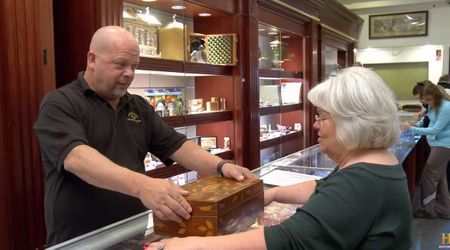How Does the Typosquatting Scam Work?

In recent times, the sophistication of scamming techniques poses an escalating threat not only to individuals but also to businesses and organizations. Among these deceitful practices, typosquatting stands out as a particularly insidious form of cyber scam. This fraudulent tactic preys upon internet users who inadvertently mistype website addresses in their browsers.

What may seem like a harmless error can lead to various consequences, ranging from spam to significant financial loss, and in severe cases, even security breaches.
Typosquatting, also known as cybersquatting, URL hijacking, or domain mimicking, has been a prevalent threat since the mid-'90s, evolving to adapt to changing online behaviors and technologies. At its core, typosquatting exploits the probability of errors made by internet users when inputting website addresses.
Scammers create counterfeit website domains closely resembling legitimate ones, typically incorporating common typing mistakes, misspellings, or alternative top-level domains (TLDs), such as ".com" instead of ".org". When users inadvertently land on these fraudulent websites, they may fall victim to various fraudulent activities, including phishing attacks, coerced downloads of malicious software, or exposure to revenue-generating advertisements for the scammer.

This scam revolves around the notion that a certain percentage of internet traffic will inevitably mistype URLs while browsing. Scammers capitalize on this probability by registering domains that closely mimic popular URLs or by exploiting commonly mistyped versions of web addresses. For instance, if a user intends to visit "example.com" but mistakenly types "exampel.com" they may end up on a typosquatting site.
The scammer's objective is to exploit this mistake, whether by displaying revenue-generating ads, peddling goods or services, or attempting to harvest personal information through deceptive means.
Typosquatting is a type of cybercrime where criminals register domain names that are similar to popular websites, but with a typo. For example, instead of registering https://t.co/98P1WoaQig, a typosquatter might register https://t.co/lc4WTrEw1s.
— Digiss LLC (@Digissllc) October 30, 2023
🧵#CSAM23 pic.twitter.com/ZKTYwyjop2
Typosquatting scams manifest in various forms, each leveraging distinct tactics to deceive and exploit internet users. Common variations include character omission, permutation, replacement, adding extra characters, or employing different TLDs. Regardless of the specific approach, the ultimate goal remains the same – to capitalize on user errors and facilitate illicit activities for financial gain.
The implications of falling victim to typosquatting scams are substantial. Personal data theft poses a significant risk, as scammers can exploit the trust associated with legitimate websites to illicitly access sensitive information such as login credentials and financial details. Furthermore, revenue generation through deceptive advertisements or fraudulent transactions, damage to business reputations, disruption of online services, and the installation of malicious software all underscore the far-reaching consequences of these scams.

Protecting against typosquatting scams necessitates a proactive approach that combines heightened awareness with the implementation of protective measures. Users should diligently double-check URLs for accuracy, utilize bookmarks for frequently visited sites, invest in reliable security software, and prioritize websites with secure HTTPS connections. Moreover, ongoing education and awareness initiatives play a huge role in empowering individuals to recognize and mitigate the risks posed by such scams and other deceptive practices.























